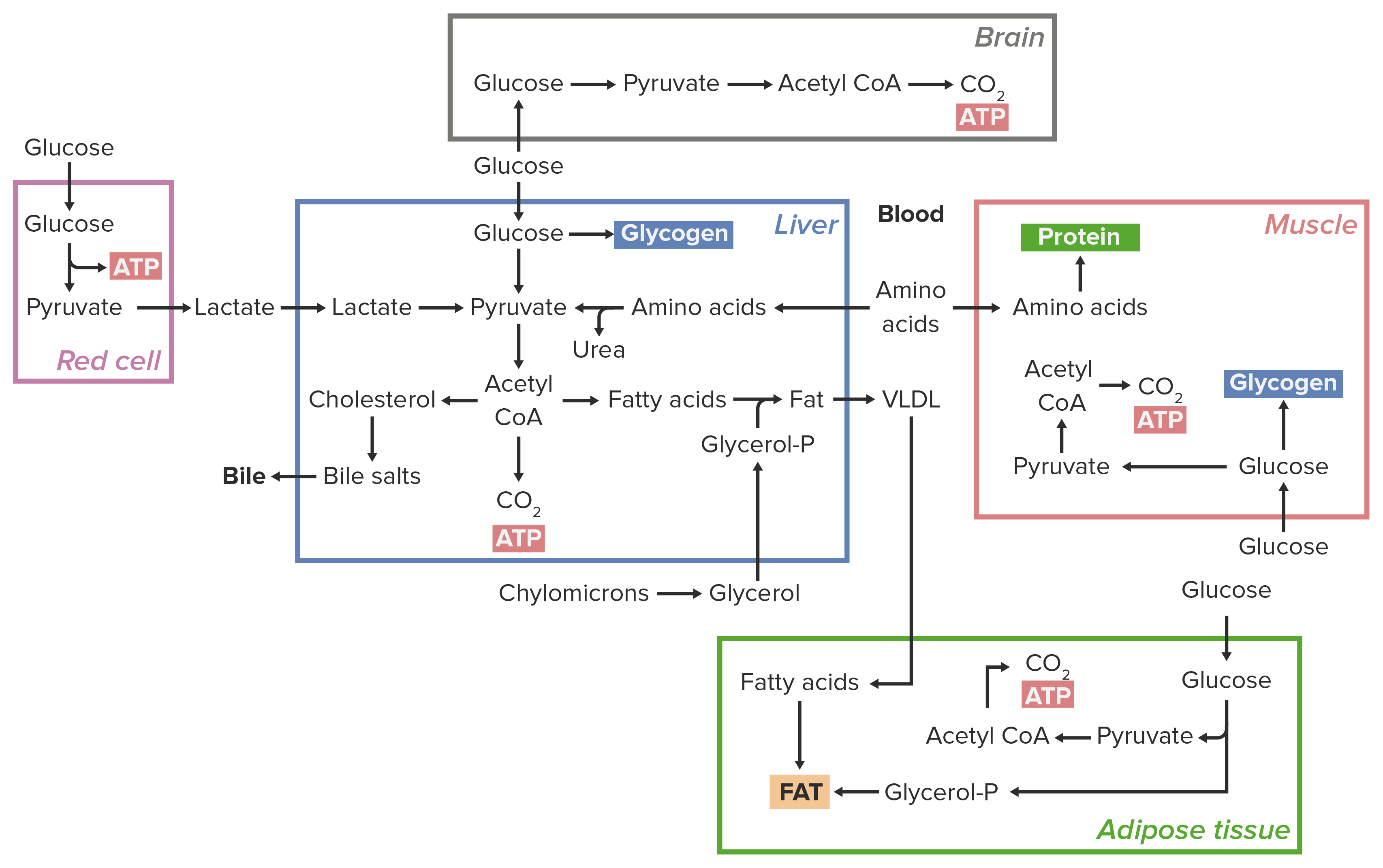Playlist
Show Playlist
Hide Playlist
Chemical, Endergonic and Exergonic Reactions
-
Slides 14 EnergyEnzymesMetabolism CellBiology.pdf
-
Download Lecture Overview
00:00 All metabolic processes or chemical reactions within cells involves some sort of change in free energy. 00:08 We call this change in free energy ΔG. ΔG is free energy that is available to do work. 00:18 And this looks like kind of a crazy equation but really it's not that complex. 00:24 ΔH, we measure that as the energy stored in bonds. So free energy equals all the energy stored in bonds, let's say of a glucose molecule, minus what we lost to disorder in the universe. 00:40 So temperature plays a factor in this, but the key here really is not what the equation says as much as it is understanding the concept of ΔG. 00:50 ΔG being the energy available to do work, right. It's either positive or negative. 00:58 If we have a system in which the products are at higher energy than reactants, for example photosynthesis, we're putting energy into the system, we have a positive ΔG, right. 01:12 We're adding energy to the system, the products now, in this case glucose have much higher energy than the carbon dioxides that went in, and that energy is stored in the chemical bonds, those covalent bonds. 01:26 So energy has to be supplied, and in a system where energy has to be supplied, we call this an endergonic reaction. 01:36 Endo meaning going inside, we're putting energy into the system, so it's an endergonic reaction. 01:44 I mean the reactants are higher energy than the product, so glucose has higher energy than the products that we release from it. 01:51 Carbon dioxide gets released make sense, and so we have a negative ΔG. 01:57 In systems where we have energy being released, we call them exergonic. Energy coming out like exercise. 02:07 So exergonic reactions in general, are spontaneous. But there is a little bit of a catch. 02:13 Imagine if you are trying to set a log on fire. That log is probably not going to spontaneously combust although theoretically it could. 02:28 You probably need to use a match to light it. If you were to just wait for it to spontaneously combust, it might take a long time. 02:37 And this waiting for it to actually happen naturally is the activation energy. 02:44 If we use a match, then we can spark the fire, a little bit of energy is input, but much more quickly we are able to overcome this energy hump, right, or the activation energy, in order to burn the log and release lots of heat from it, right. 03:02 So activation energy can be reduced in biological systems through the use of enzymes. 03:09 Pretty much any of the reactions that we have, if they are exergonic, would proceed spontaneously, however it might take several hundred thousand years and I don't have time to wait that long for all of my endergonic processes to happen. So thankfully we have enzymes to help in the process.
About the Lecture
The lecture Chemical, Endergonic and Exergonic Reactions by Georgina Cornwall, PhD is from the course Energy, Enzymes and Metabolism.
Included Quiz Questions
Which of the following is NOT correctly stated?
- In biological systems, the value of ΔG is always positive.
- Free energy is described by the equation, ΔG = ΔH – TΔS.
- Photosynthesis is an endergonic reaction as it requires energy to convert its reactants to products.
- The breakdown of covalent bonds in macromolecules during metabolism is the source of energy that helps carry out other cellular processes.
- Endergonic reactions are thermodynamically unfavorable.
What term is used to classify a reaction having a negative ΔG value?
- Exergonic
- Endergonic
- Exothermic
- Endothermic
- Exophthalmic
Customer reviews
5,0 of 5 stars
| 5 Stars |
|
1 |
| 4 Stars |
|
0 |
| 3 Stars |
|
0 |
| 2 Stars |
|
0 |
| 1 Star |
|
0 |
I like the practical comparisons used for better understanding and remembering the topic, makes it much easier and more entertaining!




